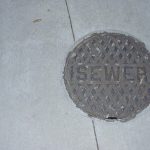The hose bib is a fitting that allows the attachment of a garden hose to the water supply. It is otherwise known as a spigot or outdoor faucet. Hose bibs are normally directly mounted on the side of most houses, and water is drawn from them to water plants, wash cars, and for other outdoor purposes. Since they are constantly exposed to the elements and almost in constant use, the hose bib often develops leaks and other problems.
Common Causes of Hose Bib Leaks
Leakage through a hose bib may mean more than just an inconvenience; it also includes waste of water and higher bills. Also, it can lead to property damage. It helps if common causes for the leak are known so that appropriate diagnosis and fixing are carried out. The most frequent culprits behind a leaky hose bib are as follows:
Worn-Out Washer
A washer is the rubber part inside the hose bib that seals off when the faucet is turned off. Since water and friction can be damaging, the washer inside a hose bib may wear out or even crack over time. If the washer becomes unsound, the water might leap around the faucet.
Faulty Cartridge
Most contemporary hose bibs are equipped with a cartridge that regulates water flow. If this part gets damaged, clogged, or experiences any other form of failure, it will result in water leakage. Water starts leaking from it when the cartridge is designed to regulate water flow after it has been weakened due to wear out or damage.
Loose or Damaged Packing Nut
The packing nut is used to seal the faucet and thereby prevent it from leaking. Over time, it can loosen or even get damaged. Once either happens, water spills out around the spout of the faucet every time it is turned on or off.
Corrosion or Mineral Buildup
Corrosion or mineral deposits could be inside any of the internal parts, from the washer and cartridge to the threads. Such deposits may exert some disturbance on a part, eventually causing a leak. Corrosion typically occurs because of the combination of water and open exposure, and mineral deposits normally occur because hard water is in use.
Freezing Temperatures
During winter months in colder climates, water may have been left inside the hose bib, which may freeze. When water freezes, it expands and can potentially cause cracks or even damage the internal components of a hose bib. Leaks can happen once the weather has warmed and the ice has begun to thaw.
Loose Fittings or Connections
If the hose bib is not tightened or the fittings are loose, water will start leaking from the connections. The cause of this is either the hose bib has not been installed correctly, or the connections have developed a play with time.
Cracked or Faulty Hose Bib
Physical damage can likewise occur to the hose bib, which may be cracked or broken. This can be due to impacts, excessive force, or deterioration. Hissing from cracks in the body of the hose bib may release water and leak out.
Sometimes, the leak is not a matter of the hose bib’s fault but that of the hose attached to it. A fault may be due to a cracked or broken hose, and it is imperative to check and ensure that a hose is not faulty before it can be said that the problem is in the hose bib.
Tools and Materials Required
This means that to repair a leaking hose bib, you will need the following:
- Adjustable wrench
- Screwdrivers
- Pipe thread tape: Tighten threaded joints.
- Pliers: Remove or hold small parts.
Materials Needed
You will need as well the following:
- Replacement Washer: Get a size that fits your hose bib.
- Replacement Cartridge: If you need one, look for your model.
- Lubricant: Plumber’s grease or equivalent to make the re-assembly easier.
Step-by-Step to Repair a Hose Bib
Replacing a leaking hose bib is easy. This tutorial will go through the main steps, and you will learn how to do it quickly and conveniently, step by step, from turning off water to replacing ruined parts. Just follow these steps to ensure your hose bib is in working order.
First, Shut Off the Water Supply
Before You Start Repairs, Shut Off the Water Supply to the Hose Bib. As pointed out, this will most often be achieved using a shut-off valve. Open the hose bib to flush out the remaining water in the pipe.
Removing the Hose Bib
Slowly unscrew the hose bib from the outside wall with an adjustable wrench. Be careful not to break the pipe or wall with the hose bib. If the hose bib is stuck, apply just a small amount of pressure; do not force it.
Check the Parts
After removing the hose bib, check the internal parts. Check the washer, cartridge, and packing nut for wear and damage. Check for corrosion or mineral buildup on all the parts that could impact their performance.
Replace the Washer or Cartridge
If the washer is already consumed, replace it with a new one. Remove the old cartridge and replace it with a new one in cartridge-type hose bibs. Ensure that the parts are properly placed and aligned when replacement is done.
Next, attach the hose bib to the wall. Use some plumber’s tape on the threads to avoid unnecessary leakage. Tighten the fittings with an adjustable wrench. Just remember to turn the water supply on after you’re done and check for leaks. If it’s a constant leak, then go back to installing a hose bib to ensure all its parts are properly fitted.
Expert Hose Bib Care Advice
Effective maintenance of your hose bib extends its life, prevents leaks, and allows it to perform as it should throughout the year. Below are some expert tips for maintaining a useful hose bib in proper condition.
- Periodic inspection: Your hose bib should be inspected regularly to notice wear signs or problems when they are in their development stage. Check for:
- Leaks: look for fallen water or moisture around the faucet and connection.
- Corrosion: Inspect the metal component for corrosion or rusting.
- Loose Components: Secure the hose bib and its other components tightly.
Cleaning a Hose Bib
Over time, your hose bib collects mineral deposits and debris. The following is how to clean a hose bib.
- Shut Off the Water: The very first thing to do when cleaning is to shut off the water.
- Apply Vinegary Solution: Dip a cloth in a vinegar solution and wring it onto areas with mineral deposits to break them down. If more persistent, you may want to scrub the surface lightly with a soft-bristled brush or even a small non-abrasive cleaning tool.
Inspect and Replace Washers
As this article will discuss, over time, the hose bib natural rubber washers wear out and create a leak. It is important to check the washer now and then and change it when you see it degenerate or damaged.
- Remove the Washer: Because of this, the hose bib has to be disassembled to gain access to the washer.
- Replace with New Washer: This means that your new washer should be of similar size and kind to the old one or a new one recommended by the experts.
Expert Maintenance Tips
Some hose bibs have a cartridge system for controlling water flow. In this case, you must verify whether the cartridge is damaged or clogged.
- Remove the Cartridge: On this occasion, you should consult the manufacturer’s instructions on how to remove the cartridge from the hose bib.
- Check for Cracks: It is essential to tilt the cartridge to look for potential signs that it may have cracked or otherwise damaged.
- If it’s Cracked or Worn, Replace: If the above cartridge has cracked or seems damaged, you should install a new cartridge as shown.
- Remove Hoses: Remove the hoses, and you may also need to drain them.
- Drain Hose Bib: Let the faucet run until nothing comes from the mist.
- Install a Freeze-Proof Bib: One option is to have a freezeproof hose bib or wrap an insulated cover around the faucet to prevent water from freezing during the worst of winter.
When to Call a Professional
Some hose bib repairs can be done using essential tools and a little DIY expertise. At the worst times, you should call the real plumber. Here is when you will know it is time to pick up the phone and call in the experts:
Leaks That Keep Coming Back
If you’ve replaced washers, cartridges, or other parts and your system is still leaking, you may have more complex repair needs. Persistent leaks can be a symptom of underlying issues that should be brought to the attention of a professional for care.
Complex or Unusual Problems
Some hose bib-related issues are complex or unusual and can involve many intricate parts of the plumbing system where the problem appears to be more complicated than the standard plumbing repair or involves multiple parts of the plumbing system, a professional plumber will be best placed to give you a truly comprehensive diagnosis and solution.
Freezing Damage Indications
When left over a long period, water that retains heavy minerals will corrode the pipes as the minerals eat away the pipe’s material. It may affect the hose bibs when it’s not drained over winter. If you think your hose bib has been affected by the cold weather and has caused damage, have a professional plumber come to investigate and repair it for damage after the cold weather is gone to avoid future damage.
Corrosion or Extensive Mineral Build-up
If you see significant corrosion or mineral deposits that are not easy to clean or remove yourself, your plumber will handle such problems without breaking a sweat. Severe corrosion and mineral deposits result in long-term damage if not sorted properly and immediately.
Internal plumbing issues
If you suspect the leak is from water coming from your plumbing system and not from the actual thing the hose bib is associated with, it could leak into a pipe feeding the hose bib and connect to more complicated piping configurations. You need professional intervention. A plumber has the equipment and the ability to address these more difficult-to-fix problems.
Pressure Issues
If you’re having problems with water pressure or flow on top of the leak, the problem might be affecting the entirety of your plumbing system. A plumber can diagnose and treat this as a problem, as one of the services in water leakage repairs is the restoration of water pressure and flow to full capacity.
Damage to Surrounding Areas
When a leaking hose bib allows water to infiltrate adjacent materials and causes damage, one must not waste time and should immediately contact the professional services concerned: water damage causes mold, damages structures, and can bring on other problems that must be fixed professionally.
Plumbing Code Compliance Problems
Some repairs may be subject to local plumbing codes and practice requirements. A professional plumber will know these codes and be able to confirm that any repairs or replacements are operated within that standard, which may avoid any potential legal or safety issues.
Wrapping Up
If you have a serious problem with a leaky hose bib after doing all these things or are dealing with complex plumbing issues, you might call in the pros. Call your local plumbing company and ask for professional repair and maintenance services. Call them so their expert plumbers can inspect and repair the problem properly to ensure your plumbing operates smoothly.
Knowing the common causes of leaks and the appropriate repair that follows is the secret to addressing a leaking hose bib. Regular maintenance and timely repairs will prevent problems, and your home will remain in good order. For expert help, call your local plumbing professional to get the job done right.





